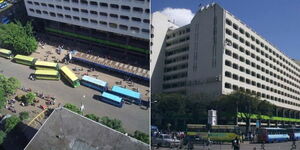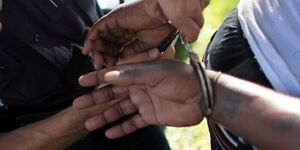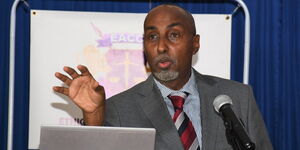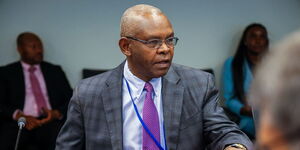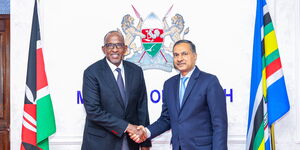Education Principal Secretary Beatrice Inyangala on Tuesday explained the flawed parameters the government is relying on in the newly unveiled education funding model.
While appearing in the National Assembly, the PS and her colleagues were put on the test to explain the funding after uproar from Kenyans, a majority of whom complained of ending up in the bands 4 and 5 despite having less household income.
Over the last week, parents complained that their children had been placed in a band where they are expected to pay Ksh67,000 fees and above which falls in the top two bands.
Inyangala admitted that a majority of the students landed in the Band 4 and Band 5 since the high school they attended was a classifying parameter and yet majority attended national schools where school fees topped Ksh53,000.
She further noted that the University Fund relied on data entered by the students and noted that some, who attended top schools under external help such as harambees were afraid to make the declaration while making the applications.
"Without reliable data on income, it is very difficult for us to use income precisely to predict for the time being. However, I have data here from the National Examination Council for the results of the students who are now joining University," she explained.
"According to this data, 84.8 per cent of the students who scored C+ (plus) and above studied in national schools. We can see that this admission is skewed towards national schools."
"In this national schools, students were paying Ksh53,000 minimum and we also know there are other levies. Some of these students also studied in private schools," Inyangala added.
She further noted that despite the flawed parameter, the affected students had failed to demonstrate that they come from needy families hence making it difficult for the institution to determine the correct cluster to classify them.
"When we use the secondary school that a student went to as an indicator and the students went to national schools and they have not demonstrated that they were funded through harambees or they had a guardian, then it becomes very difficult for us not use that variable as a discriminator," she added.
"However, this is what then opens the opportunity for appeal. This may also include visiting some sampled students in their homes."
What to Do
University Fund Chief Executive Officer Geoffrey Monari, who also appeared in the National Assembly, explained that the classification was not cast on stone and encouraged families dissatisfied by their cluster to make another application.
He further explained that the Fund had dispatched representatives to the university to guide the students in making applications and encouraged individuals without the means to apply to proceed to their respective institutions from where the applications can be done.
"Categorisation of many of the students who have been classified in the Bands of 4 and 5 depends on the information they have given us. We highly depend on the information that is given by the students.
"However, they have a chance to give us more information if they are not classified in the correct band," he stated.
Bands of Funding
In Band 1 which covers the extreme needy students, the government covers 70% of their education costs through scholarships, and an additional 25% through loans, leaving only 5% for the family to contribute. Students in this category are eligible to receive Ksh60,000.
In Band 2 for low income households, the government provides a 60% scholarship and a 30% loan, covering 90% of the total education costs. The family will cover the 10 per cent funding while students will receive Ksh55,000.
In Band 3 whose households have an income of between Ksh23,670 and Ksh 70,000, students receive a 50% scholarship and a 30% loan, with the family contributing 20%. Students are also eligible to Ksh50,000 disbursement.
In Band 4, families with income between Ksh70,000 and Ksh120,000, students receive a 40% scholarship and a 30% loan, with the family expected to cover 30% of the fees.
In Band 5 where families earn more than Ksh120,000, the families contribute 40% of the education costs, receive a 30% loan, and do not receive a scholarship.

